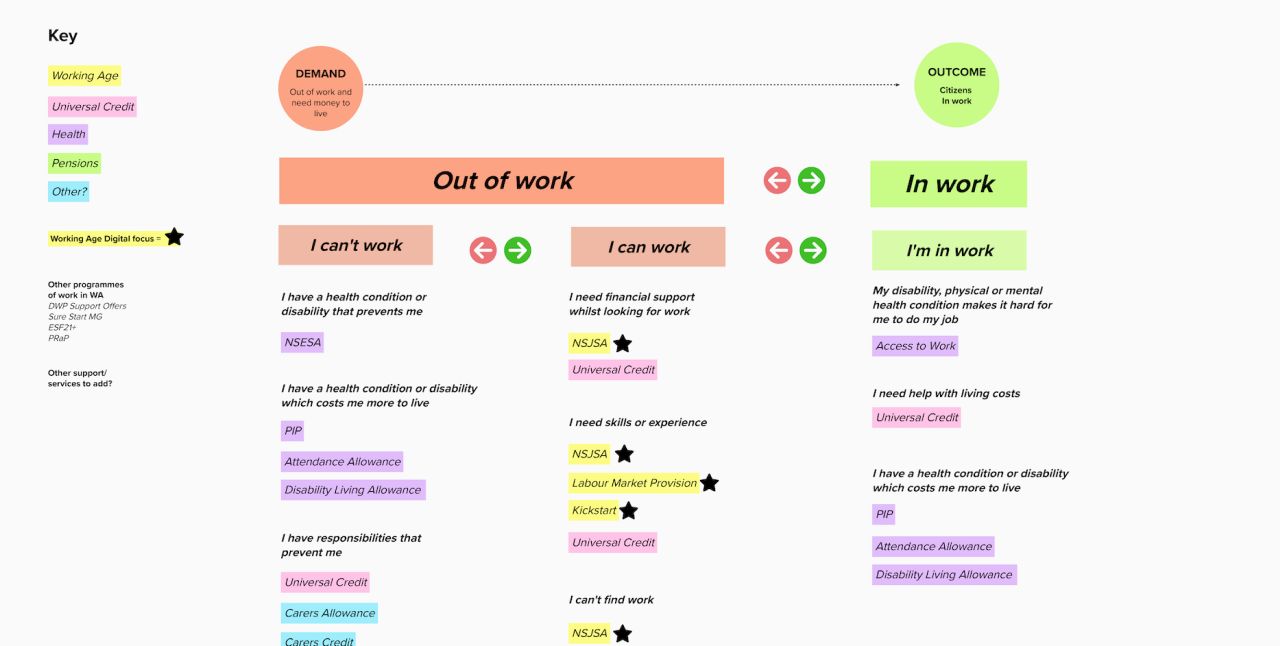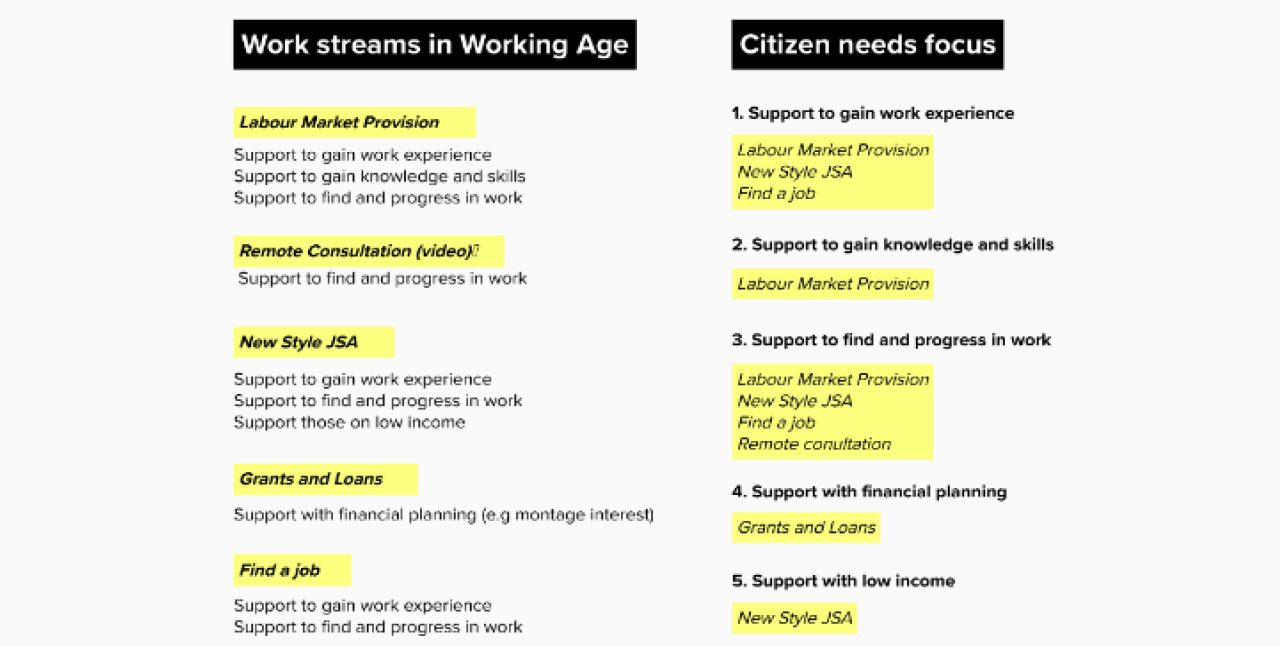Whilst at DWP, I worked to help define the service strategy for the Working Age department to support citizens into work.

Within the department, multiple services all operate in order to support citizens on their journey to work. From not being able to work, struggling to find work and then being in work but still needing support, citizens can access varying services from the DWP to help them. However, within the department there was no shared view or understanding of how all the services currently interacted with each other and where problems we occurring due to silos and lack of knowledge of dependancies.
As the most senior service designer in Working Age, I took the initiative to look at problems across the department space, to help teams collaborate more effectively with other services in order to drive more value to our citizens. The various service teams had also informed me that they felt siloed from the overall strategy of the department, so I also brought in the Head of Product to build out a shared strategy that would help communicate the vision of all the collective services.
Building the service strategy vision
My aim was to create a high level overarching view of the Working Age department service as a whole, which would be used to highlight cross-functional opportunities that could improve overall services for citizens, but also save the department money, time and effort by allowing teams to work more effectively. And therefore put more money into developing services to meet the needs of citizens. For example, instead of having multiple services working in silo on a problem taking time and money, the problem could be tackled collectively to achieve the goal.
To start to gain an understanding of the full service, I gathered service blueprints of the various services. Through reviewing, I discovered was that there was not only multiple services offered to citizens for similar needs, but there was also multiple shared problems, resources and technology, for example there are multiple services involved in helping a citizen find a job.
As citizens needs were key, this became the core structure of the strategy, so I mapped out all the services that met varying citizen needs. I started mapping the multiple services helping support citizens that couldn't work due to disability or due to caring for someone, like Universal Credit and Disability Allowance. I then mapped the multiple services helping citizens get into work, like Jobseekers Allowance, Kickstart and Universal Credit. And finally, I mapped the multiple services helping citizens whilst in support, like Access to Work and Personal Independence Payment.

Although linked to work, not all the services sat in Working Age, therefore, I highlighted which department each service sat in. From this, I could see that only few services actually sat within the Working Age department, leaving big gaps in knowledge and collaboration with many other services sitting in different government departments.
Building the map, we could now start to see gaps, missing links, shared pain points, shared users, capability needs, processes and staff involved across the full department. This helped the department to make strategic decisions on where to focus on improving and where we can remove costly technology and processes, whilst also looking at opportunities for the future.
Improving purpose of teams
The map also started to drive the discussion of naming of services and service teams to help better align teams to the citizen needs. For example, all the services involved in helping citizens look for work, would be named and have the purpose of 'supporting to find and progress in work.'

Aligning with other services
To start the process of aligning with other services, I started to have regular sessions with other service designers from those services, where we would discuss work in progress and current insights we had discovered. We learnt that all services were facing the similar problems, for example, citizens not knowing which benefit to apply for, struggling to navigate the gov.uk website and when receiving negative decision on their application not being signposted to what they could be eligible for.
Bringing this insight back to the core service meant I could map out key problem areas that were shared across different services. As with any service map, this enabled myself and the Head of Product to see which areas were causing the most pain and how many services were being impacted.

In order to best address shared issues, we started working groups, shared insights, fed back learnings and helped align service teams to help prioritise and share the work involved in solving problems. This was particularly effective as it helped teams be more efficient and helped our citizens experience a better service.
Outcomes
Initially I started this work to help get service teams better aligned on the department goals. However, this work developed into a key strategic piece for the service teams to build out from and triggered changes in team structures and ways of working in the department.